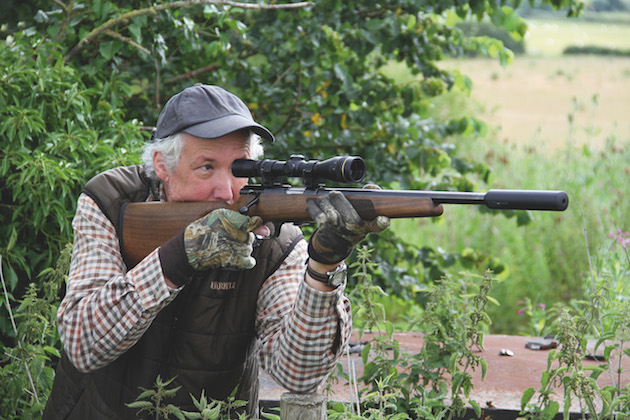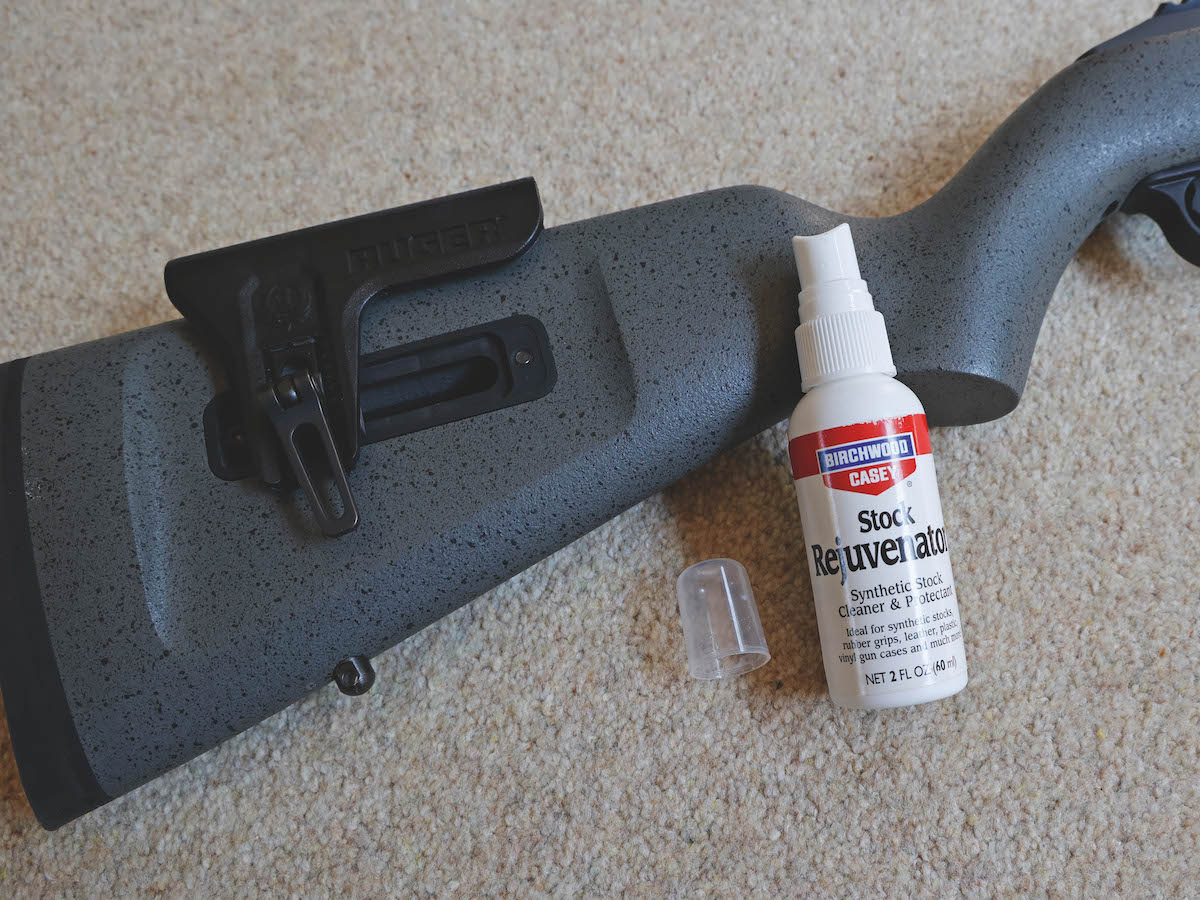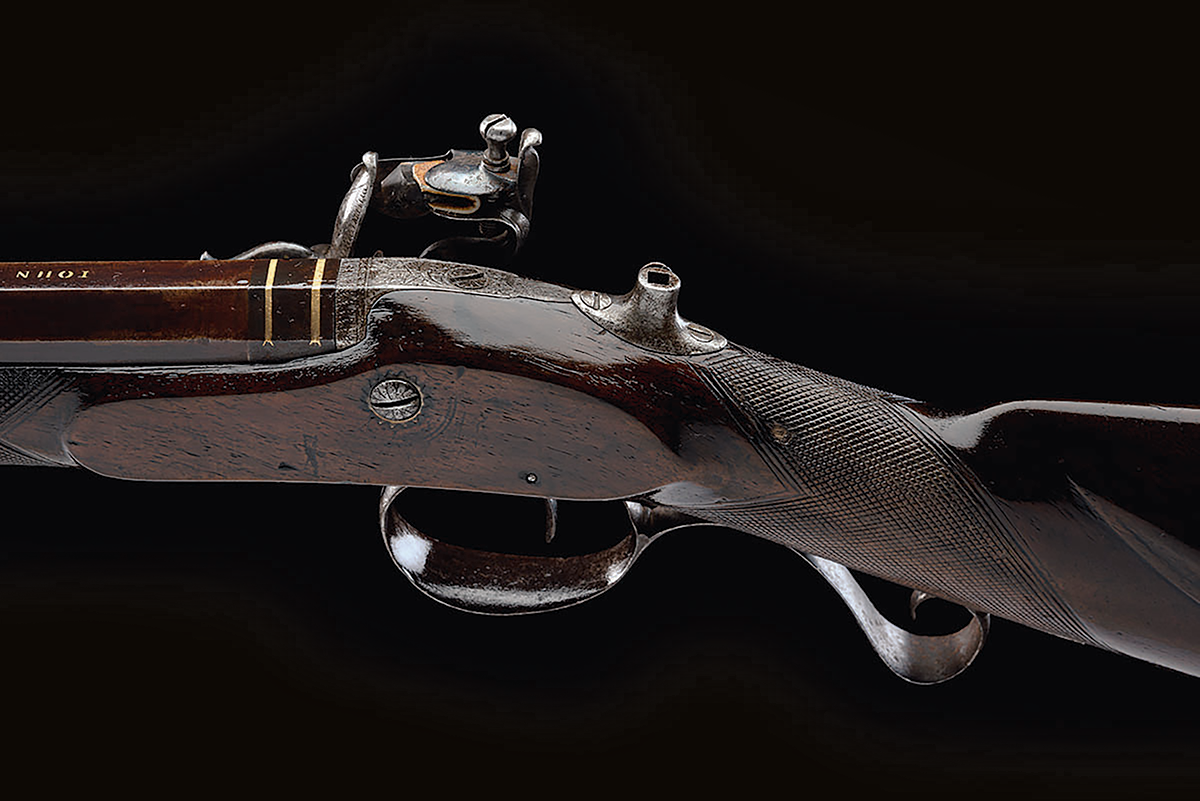Things that affect rifle accuracy (and how to correct them)
Even the best rifles can lose accuracy

Stock length of your rifle must be right for your physique
Problems with rifle accuracy frequently frustrates rifle shooters.
It’s not surprising really. A rifle is a fine precision instrument. Everything within it needs to work correctly.
Many things can affect rifle accuracy. Some you can fix yourself, others you will have to bring to a gunsmith’s attention.
Four things that cause rifle inaccuracy

The muzzle crown is crucial so correct cleaning is necessary, otherwise more harm is done than good
1. Barrel and muzzle crown damage
This area of the barrel that is subject to a great deal or use from both the interior and exterior. Whether you fit a sound moderator, muzzle brake or not, any damage, corrosion or imperfection here will cause problems down range. The muzzle is the last part of the rifle to influence the bullet’s flightpath and any damage, wear or obstruction here is detrimental.
Get a gunsmith to sort this one out for you. Get the barrel professionally re-cut in a lathe. At the same time, get the gunsmith to radius the crown or use a stepped crown to give some protection to the rifling in future.

The throat takes a pounding, with high pressure and erosion from the hot combustion gases
2. Throat wear
This is the area of the barrel at the chamber end where there is free bore before the rifling begins and it is where problems can occur, due to the initial movement and obturation (swelling of the bullet to fit the barrel grooves) and immense pressure generated behind the bullet. Any wear in this crucial part of the barrel will send a bullet down the barrel “out of true” — that is, non-concentric to the bore axis. This cannot be corrected farther down the barrel so inaccuracy will occur, usually noticed as a slow deterioration. Look for shallow rifling depth in the first 2in to 3in of the barrel compared with the rifling farther up the barrel.
With excessive wear, the bullet can wobble as the pressure behind it builds and it will never move true up the barrel thereafter. If the wear is small and you reload your own cartridges, you can seat the bullets farther out of the case to engage the bullet closer to the lands. But there comes a point when the extra length of the cartridge will not feed through a magazine. If this does not work, there will be no alternative but to re-barrel the rifle.

Incorrect cleaning or badly cut rifling or aligned chamber can cause all sorts of accuracy issues
3. Rifle corrosion and erosion
This is due to neglecting rifle maintenance. If the rifle has been used and not cleaned, the repeated deposits of burned powder and then copper from the barrel can trap moisture and combustion chemicals that will eat away at the metal and deteriorate the rifling. One of the main causes of this is the non-removal of a sound moderator after use and then storing the rifle muzzle up. This allows the toxic chemicals and moisture from firing to seep back down into the barrel and start the corrosion process, usually the first 5in or so. The only remedy is to cut the barrel and redrawn but not all barrels respond to a shorter length, so consult your gunsmith.
4. Bedding vibrations
The cause of more inaccuracies and barrel problems than realised. The barrel vibrates as the bullet passes along its length, so it is best to keep that vibration as smooth and uniform as possible. If the barrel is impeded from having a free vibration anywhere along its length it can cause inconsistent harmonics and thus affect accuracy — that is, alter the movement or position of the muzzle as the bullet exits.

Most barrels perform better when free-floated; however, some work with some upward pressure
Most barrels these days are free-floated — they have support at the receiver end but 90 per cent of the barrel does not touch the fore-end. Check by sliding a piece of paper between barrel and fore-end — it should move freely. If it is touching, that area can be relieved to cure the problem. Some barrels, however, have pressure points to the fore-end, usually at the fore-end tip, to give a small amount of upward pressure, which is normal. Other, older guns are fully bedded along the entire barrel length. When a sound moderator or bipod is fitted, it can alter the weight and recoil characteristics of the barrel, so check that the barrel is still free for the fore-end.
Check the bolt handle on your rifle to improve accuracy
This is an issue you can correct at home

Check the area around the bolt handle and remove any wood or synthetic material if it binds here




Is your moderator affecting rifle accuracy?
This is also worth checking. Any addition of weight to the end of the barrel will change its harmonics and, therefore, its point of aim.




Other rifle accuracy issues
Action and boltlugs
Many rifles have different ways to lock up the bolt in the action body or back of the barrel. It is crucial that the lugs mate/locate perfectly to the action to ensure a positive union and thus strength. Many rifles are mass-produced so you will find that bolt lugs only contact with 50 per cent of their area or worse, unevenly. This puts a strain to one side, affecting the firing cycle and ultimately accuracy. This can be cured by lapping the lugs into the action using valve-grinding paste, but it is best to take the rifle to a gunsmith, for whom it is a simple job.

Correct concentricity, precise fitment and 100 per cent contact of the locking lugs enhance accuracy
Bolt handle binding
Quite often the bolt handle will bind on the stock, be it wood or synthetic, and this causes a problem with vibrations on firing. It is simple to sort out by relieving/removing excess material from the binding area so that the bolt moves freely.
Concentricity or warpage
Some rifles are not well-made. If the action is non-concentric to the barrel — threaded on the skew — or the bore is non-concentric to the cartridge held by the bolt in the action, then accuracy will suffer. This is an issue that should only be tackled by a gunsmith. It can also be caused by the bedding block that the action sits on being warped or badly made. This can be removed from the stock and placed on a piece of steel or flat glass; if it rocks from side to side with pressure applied, it is warped, so replace it or have a gunsmith skim it flat.

Some rifles come with factory-fitted aluminium bedding blocks – these give a consistent bedding of the action to the stock
Stock and bedding
If you’re concerned about your rifle accuracy then this is an important point to check. The way the action sits into the stock is key for best accuracy. It has to be rock-steady on firing so there is no movement, which translates into consistent accuracy.
This can be best obtained by a synthetic bedding compound that fills the gap between action and stock to mimic accurately the underside of the action so it sits perfectly true. Materials such as Acraglas, Marine Tex and Devcon can be used, in conjunction with stainless steel or aluminium pillars that offer the perfect solution. These pillars are where the stock screws fit through and support the action so when the screws are tightened they tighten to a set torque and do not compress the stock material.
Do not forget where the recoil lug from the action sits into the stock — it must be square to the lug’s surface with even pressure and benefits from a synthetic bedding compound.
Loose accessories
Scopes, sound moderators and bipods that don’t fit properly can also affect rifle accuracy. Get the best scope mounts you can afford for your rifle and do not mix two different types of metal for base and scope rings. They wear differently under recoil and sloppiness will occur. Scopes do go wrong and swapping one for another instantly detects if accuracy problems lie here.
Use a proper torque screw to fit a scope to the recommended tightness. A tip is to use Loctite for the scope bases so that they do not work loose.
Bipods can cause different pressures to the stock under firing and this can cause all sorts of inaccuracies if the barrel touches the stock. Similarly, a badly fitted or loose or heavy moderator will affect accuracy. It is best to test with and without one fitted to see if this is the cause of bad groups.

A few checks and tweaks can make all the difference to your shooting
What makes a rifle accurate?
Sometimes the most frustrating cases of inconsistent accuracy can be pinpointed to minor causes that are easily rectified. Whilst some you can do yourself, others (as listed above) are best left to a qualified gunsmith.
If I shorten a rifle barrel, will it affect accuracy?
Shortening a barrel will not reduce accuracy but it will affect velocity to some degree, depending on the calibre and initial velocity.
Typically, shortening a .17 HMR barrel from, say, 22in to 16in will reduce a 17-gr bullet from 2,665fps to 2,551fps, a loss of only 114fps.
You need to have the rifle’s barrel expertly reduced in length and then rethreaded to take a sound moderator, otherwise there will be accuracy issues. The barrel will also need to be reproofed. Any misalignment, improper damage to the rifling, muzzle crown and thread pitch will cause a dramatic reduction in accuracy.







